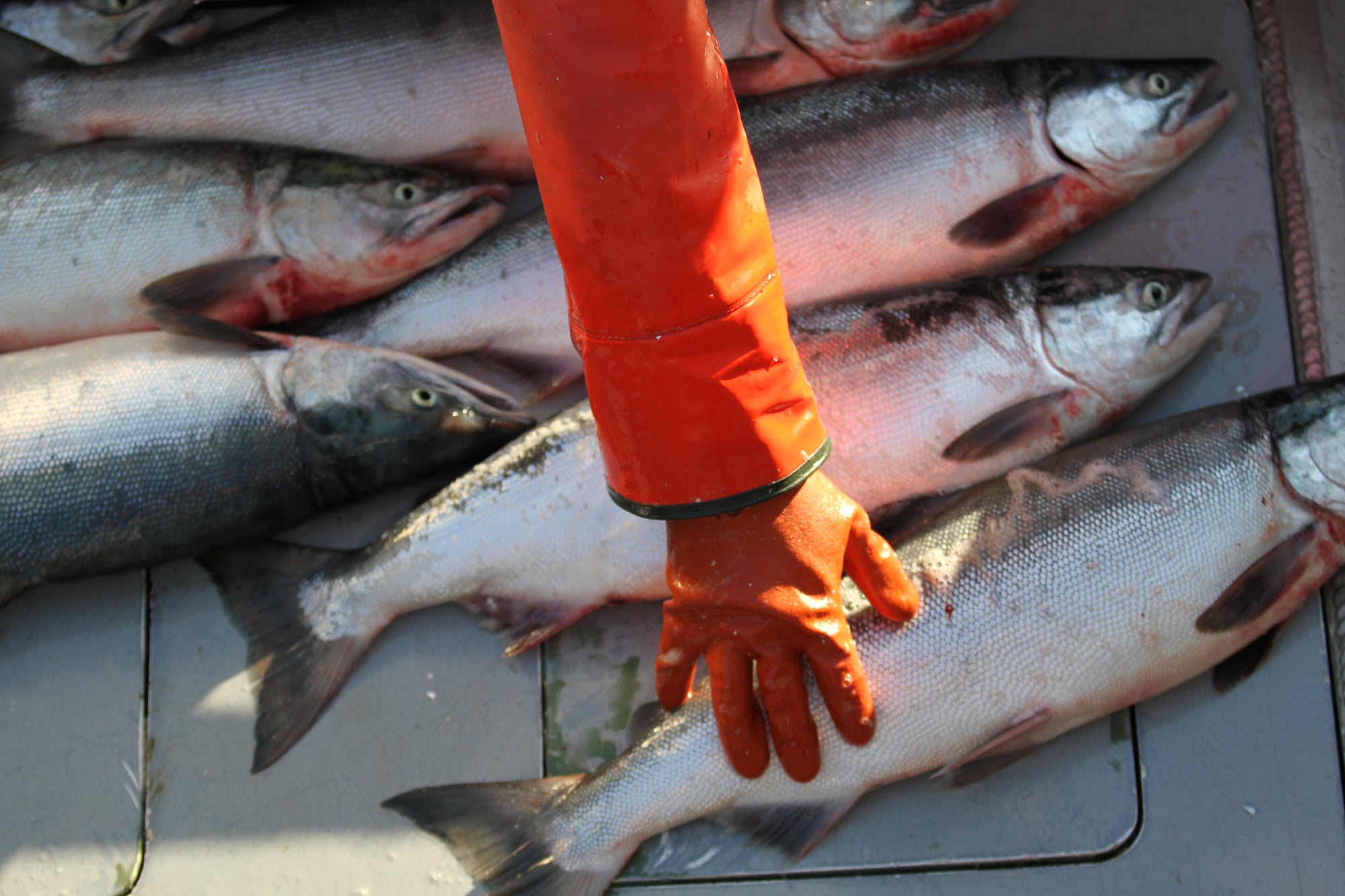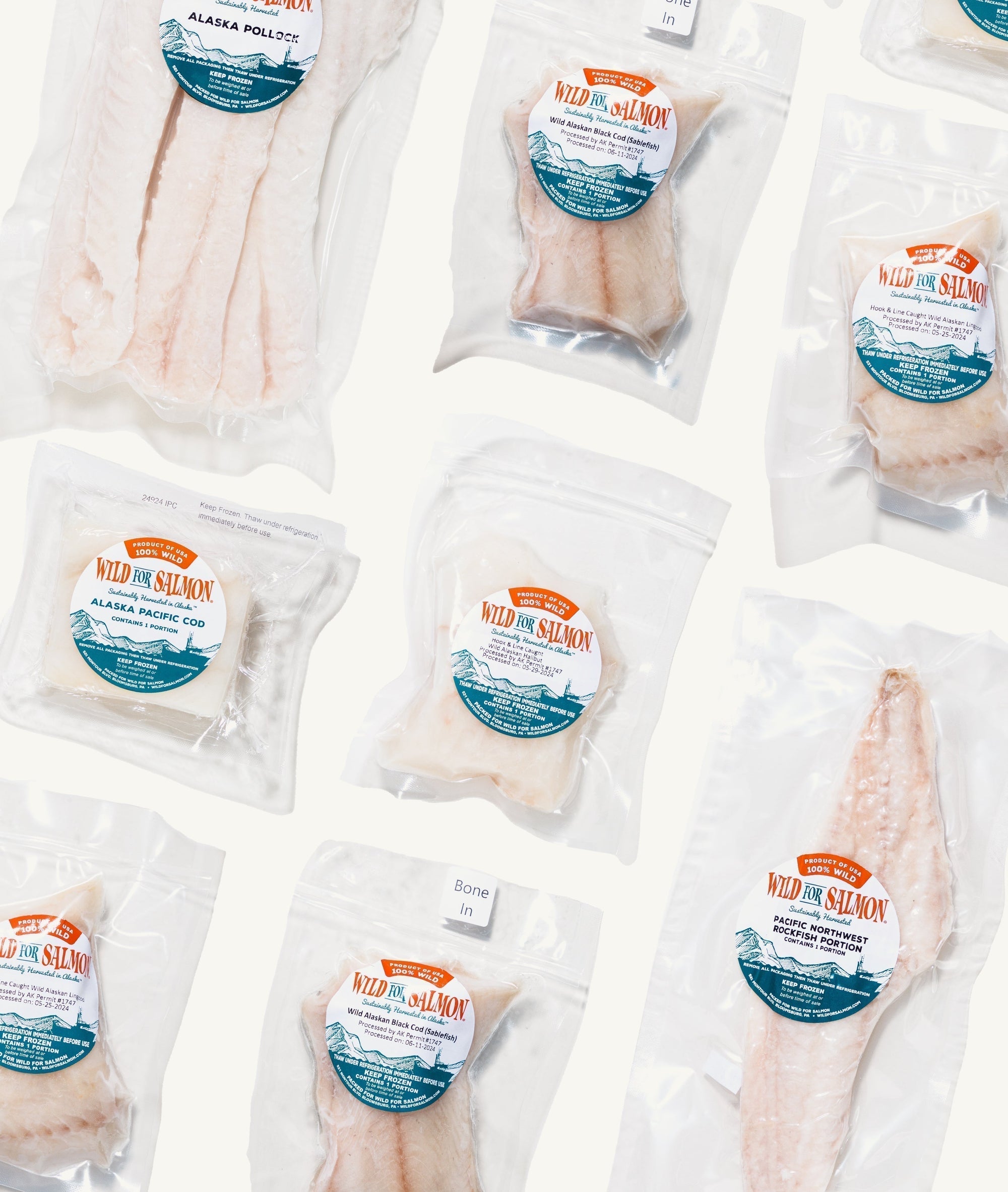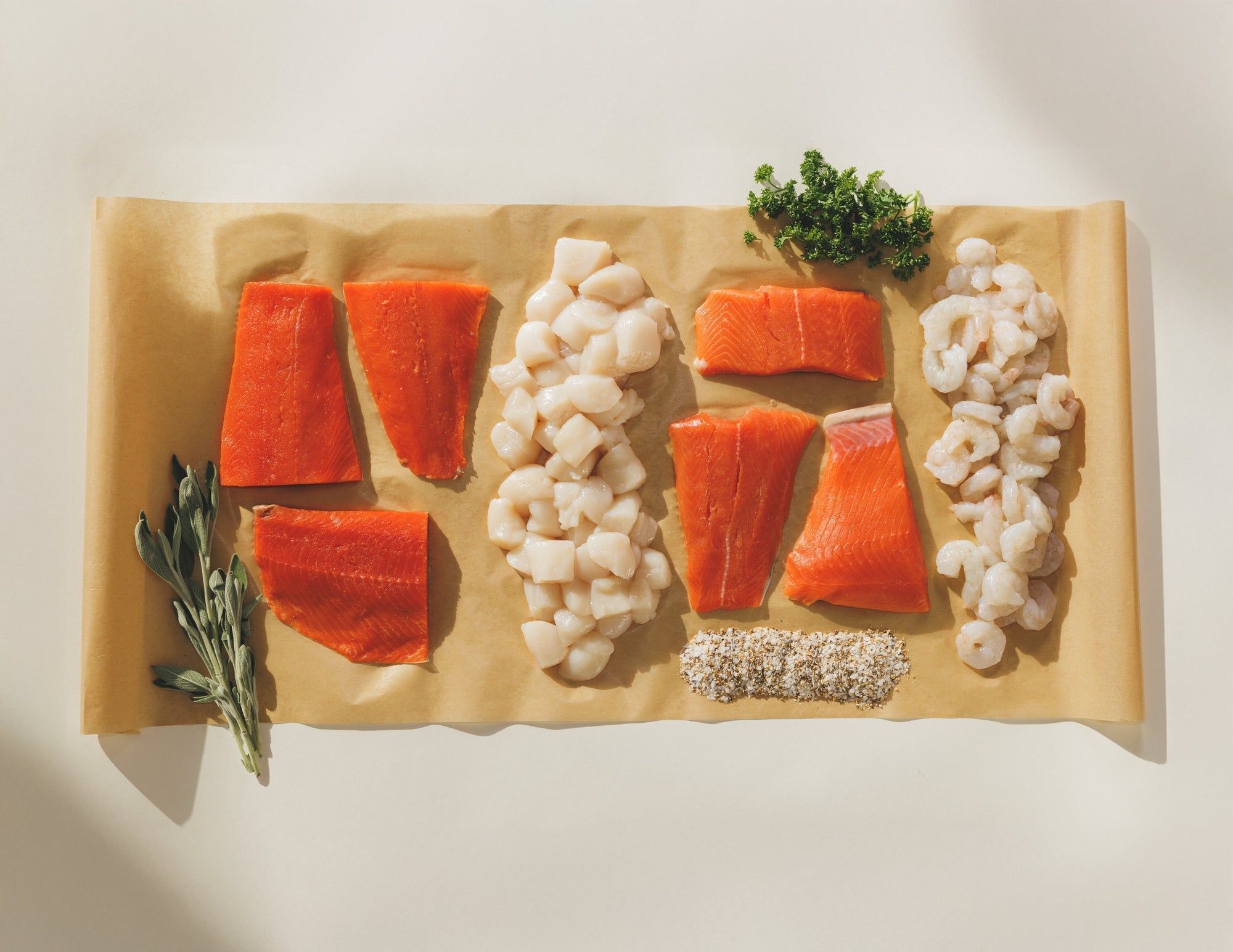A Reminder About the Dangers of Farmed Salmon
In the cold, wild rivers of Alaska, salmon are born with a purpose: to live freely, to migrate vast distances, and to return home when the time calls. But not all salmon live this way.
Across the world, farmed salmon crowd artificial pens, swimming in circles, fed synthetic diets, and dyed to look like their wild counterparts. At Wild for Salmon, we believe in transparency and in sharing why wild-caught salmon remains the healthiest, most sustainable choice for your table and for the ocean.
Why Farmed Salmon Isn’t the Same
In fishing towns across Alaska, there’s a bumper sticker that reads:
“Farmed Salmon Dyed for You.”
That phrase says it all.
Unlike wild salmon whose deep red color comes naturally from shrimp and krill farmed salmon eat processed feed. To imitate nature, producers add carotenoid dyes (either synthetic or from ground crustaceans) so the flesh looks pink instead of pale gray-white.
If you avoid artificial dyes like Red 40 in your children’s food, you might want to do the same with your fish.

Hidden Contaminants: The PCB Problem
Another concern lies in PCBs (polychlorinated biphenyls) man-made chemicals banned in the 1970s that still linger in the environment. These compounds collect in fatty tissues, and because farmed salmon have higher fat content, they also tend to accumulate more PCBs.
Even the Mayo Clinic cautions that farmed salmon fed ground-up fish often show higher PCB levels than wild-caught salmon. Although some Norwegian operations have made improvements, American aquaculture still lags behind.
High fat might sound appealing for flavor or smoking, but when that fat stores industrial toxins, it becomes a different story.
Why Wild Is Worth It
Wild salmon are nourished by nature’s pantry free-ranging on algae, krill, and other ocean life. Their flesh glows red with natural carotenoids. Their fat carries the clean, heart-healthy omega-3s that make salmon such a prized food.
Our wild Bristol Bay sockeye come from one of the most sustainable fisheries on Earth. Every fillet we share is traceable, responsibly caught, and flash-frozen at peak freshness. No dyes, no pens, no shortcuts just salmon as nature intended.
The Bottom Line
There are countless reasons to choose wild over farmed, but your health is at the top of the list.
Wild salmon offers purity, superior nutrition, and a story rooted in wild waters not crowded pens.
Because when you buy wild, you’re not just choosing better food. You’re supporting cleaner oceans, stronger communities, and a future where fish remain wild, free, and thriving.



